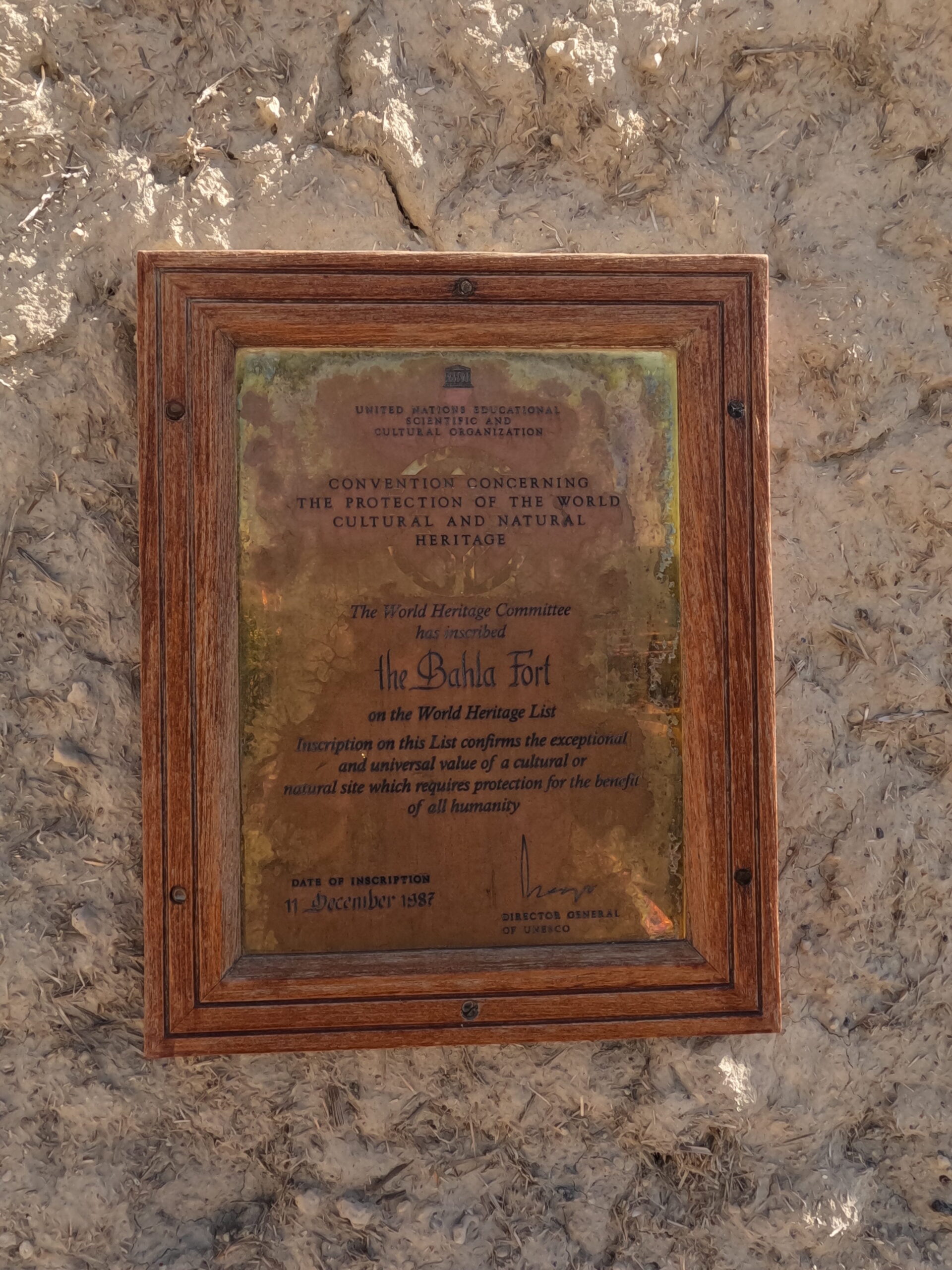
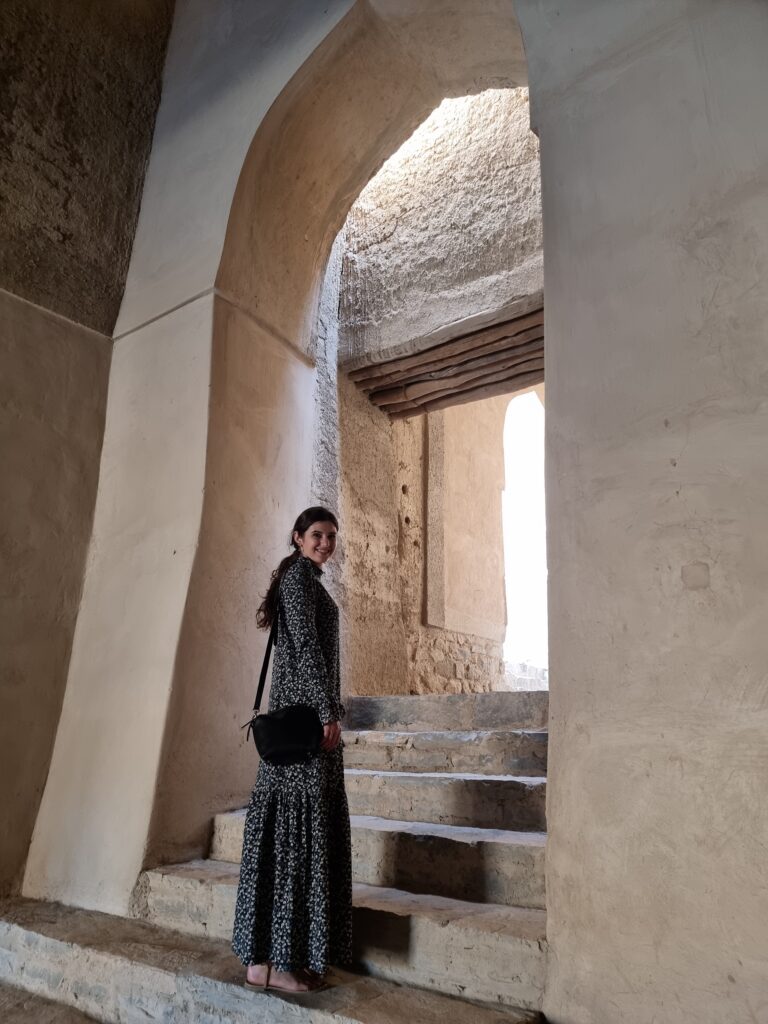
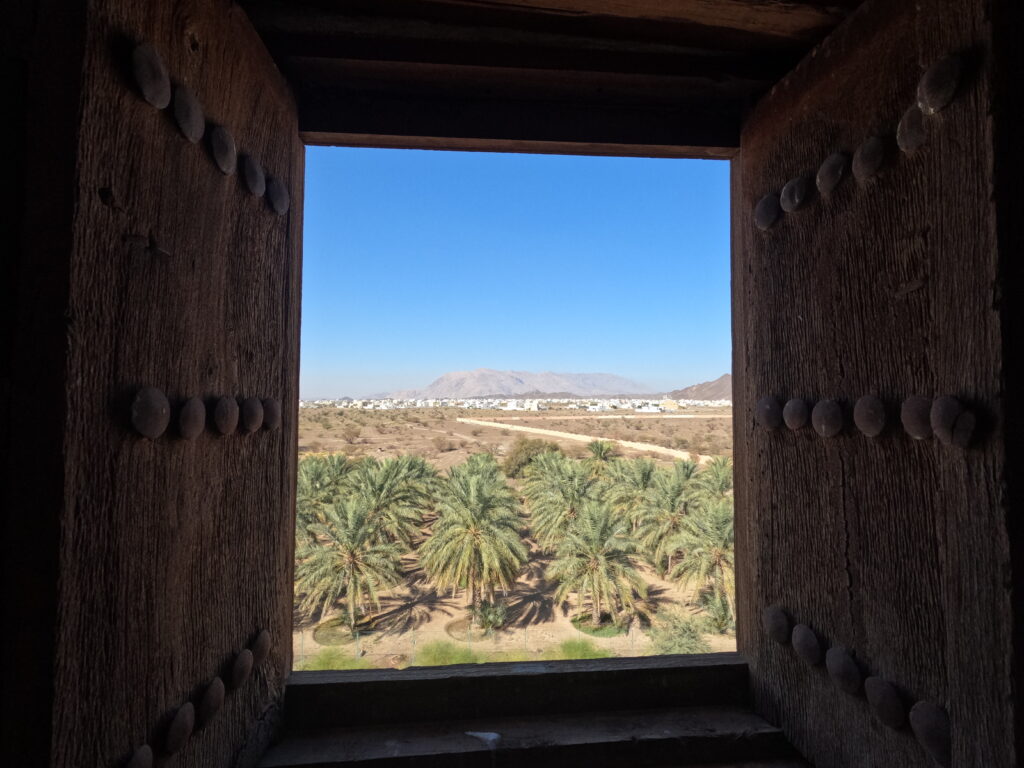
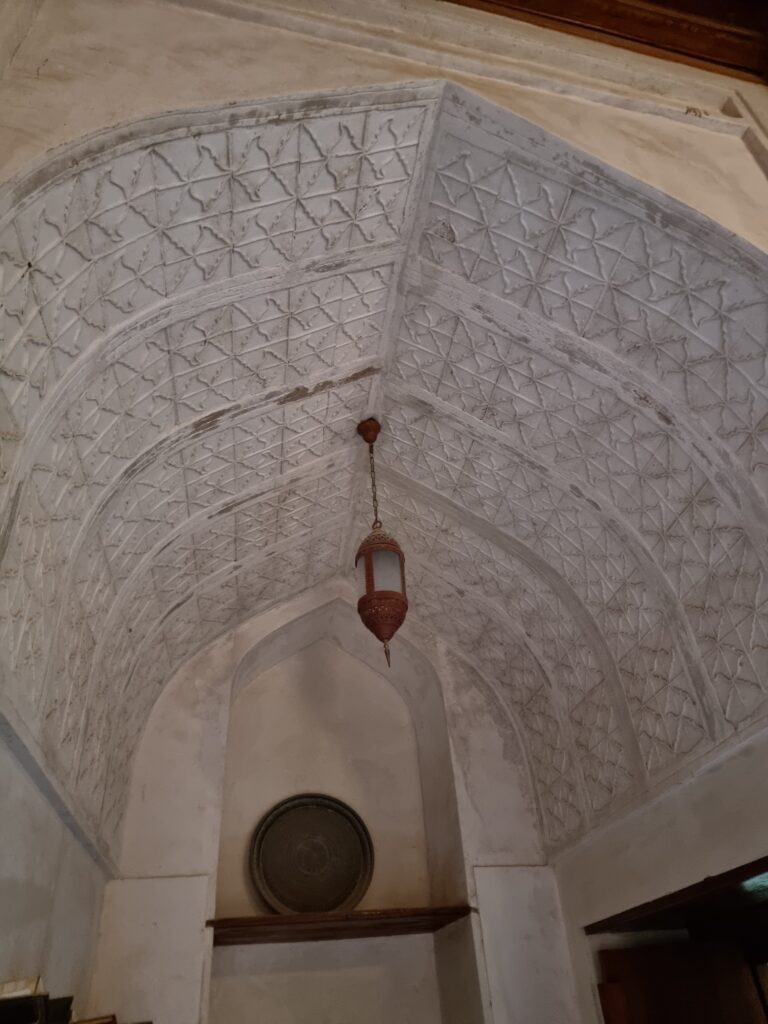
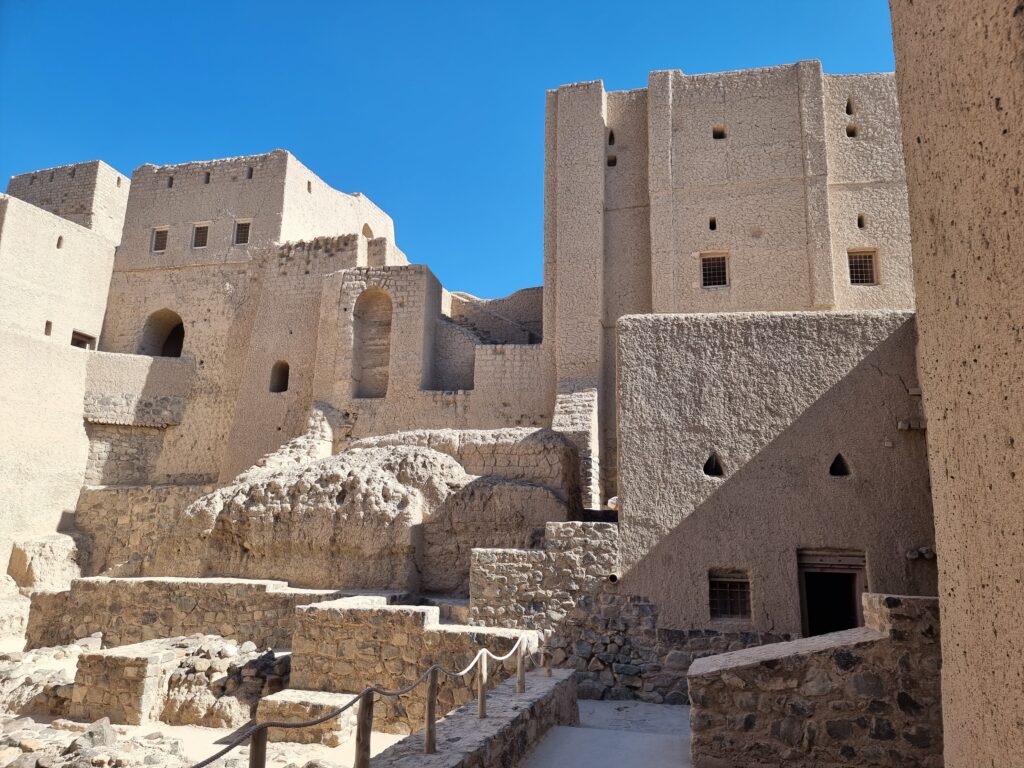
A brief background
In the North of Oman there is a series of Forts and Castles. This is known as the Castle Route, which stretches from Bahla all the way to Muscat. Personally, I wouldn’t call it a route, it is more of a cluster of castles and forts. Never the less, it is important to know which are worth visiting. These castles are quite a distance from one another, but this isn’t necessarily always the fact. Jabreen Castle and Bahla fort is a perfect example of this.
Both of these are worth the visit for two different reasons. Firstly, Jabreen Castle has been restored to its former glory. I’m not sure whether the castle hasn’t been as badly damaged as some of the others through the years, however, it remains one of the few castles in Oman that is decorated and filled with relicts. I might be wrong, but I think the other fort which is also beautifully decorated is Nakhal Fort (I was last there when I was 15, so I’m not sure whether something has changed).
Secondly, Bahla fort is worth visiting due to its astonishing size. Bahla Fort is surely one of the biggest forts in Oman. The one sad thing is that it looks like a big sand castle as there aren’t really any decorations. The only visible décor is the architecture, which does not disappoint. I would, however, recommend that you visit Bahla Fort before Jabreen Castle as the lack of decorations make Bahla seem a little bland.
Now let the adventure begin…
Jabreen Castle
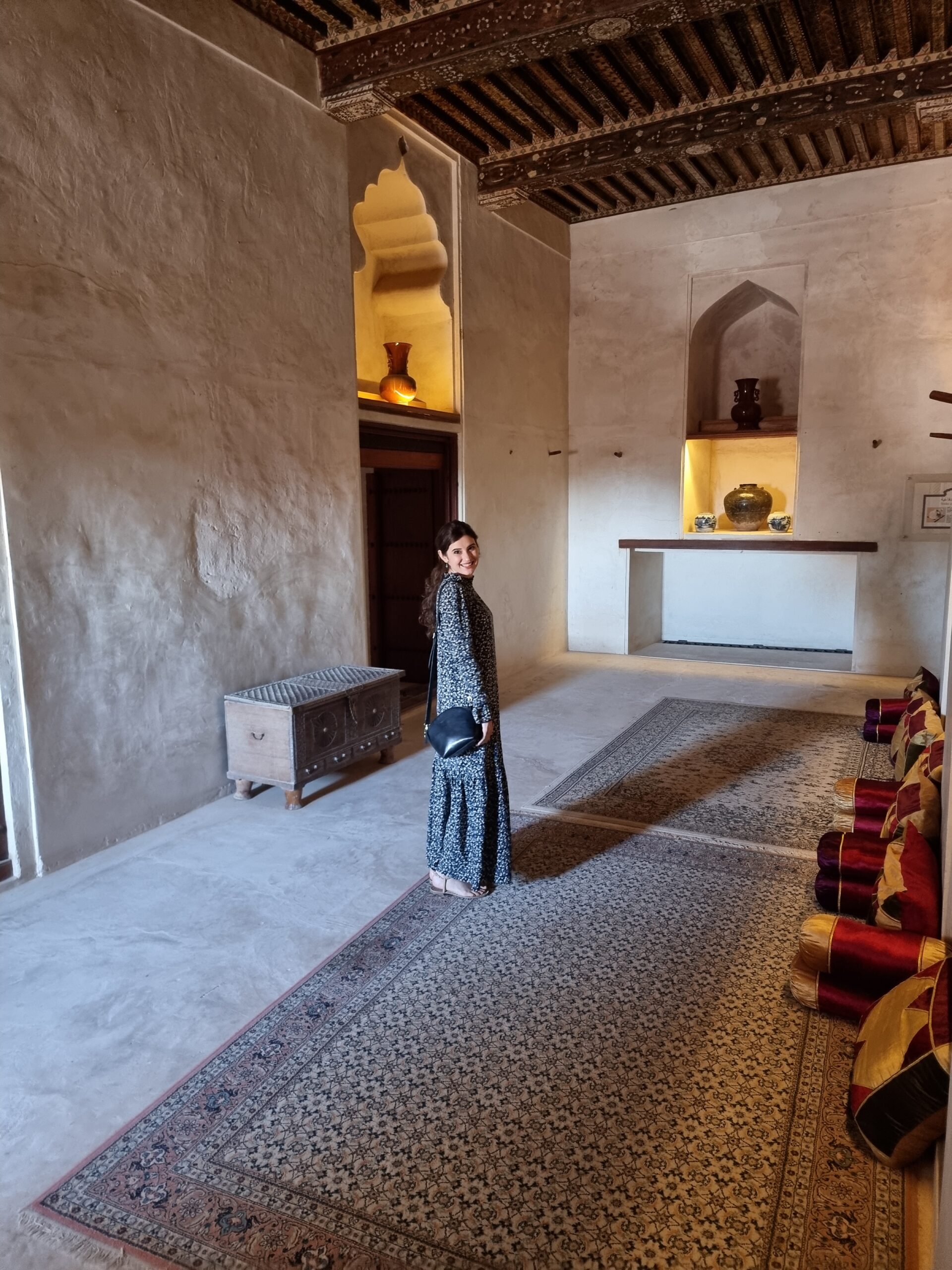
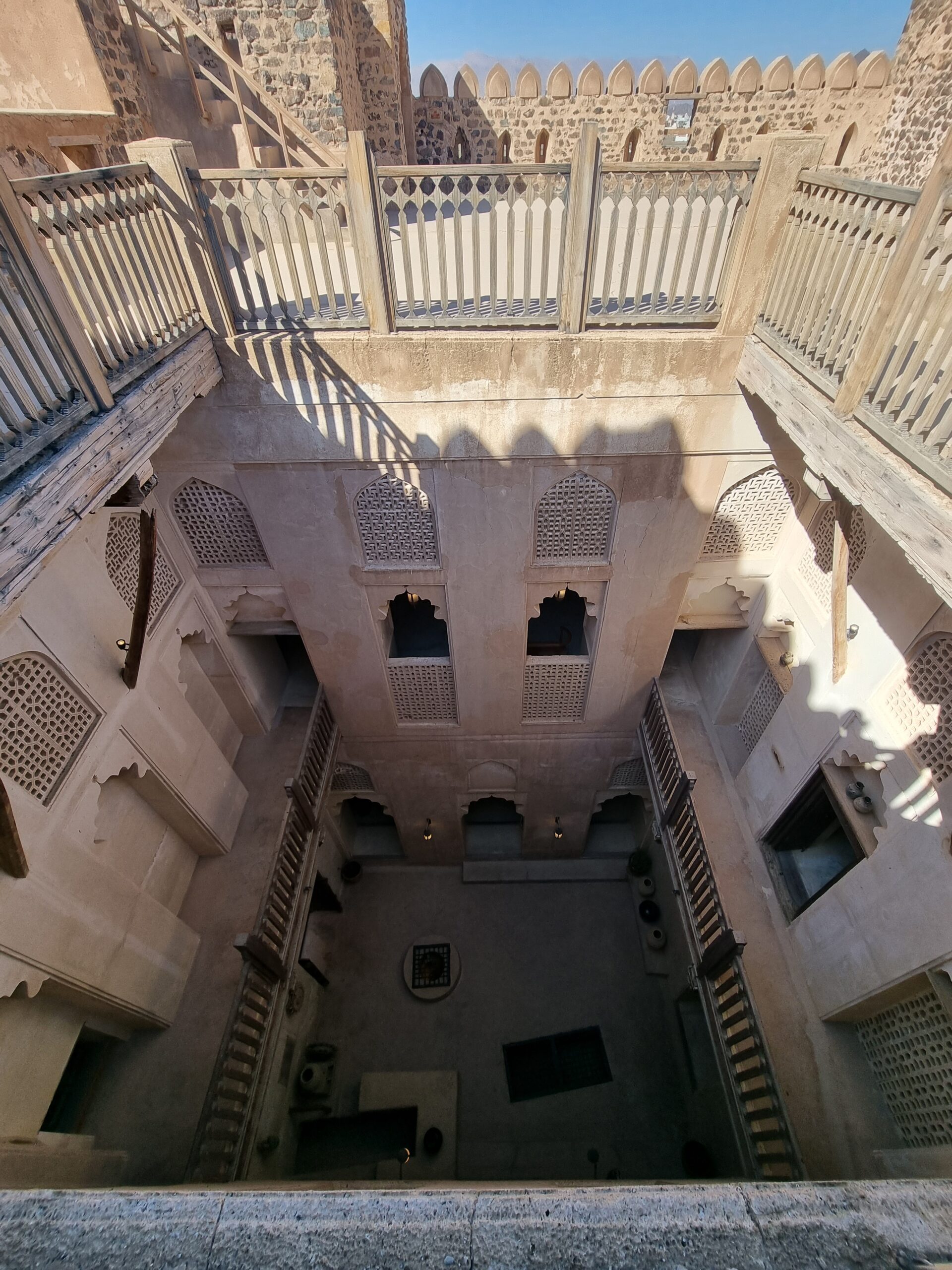
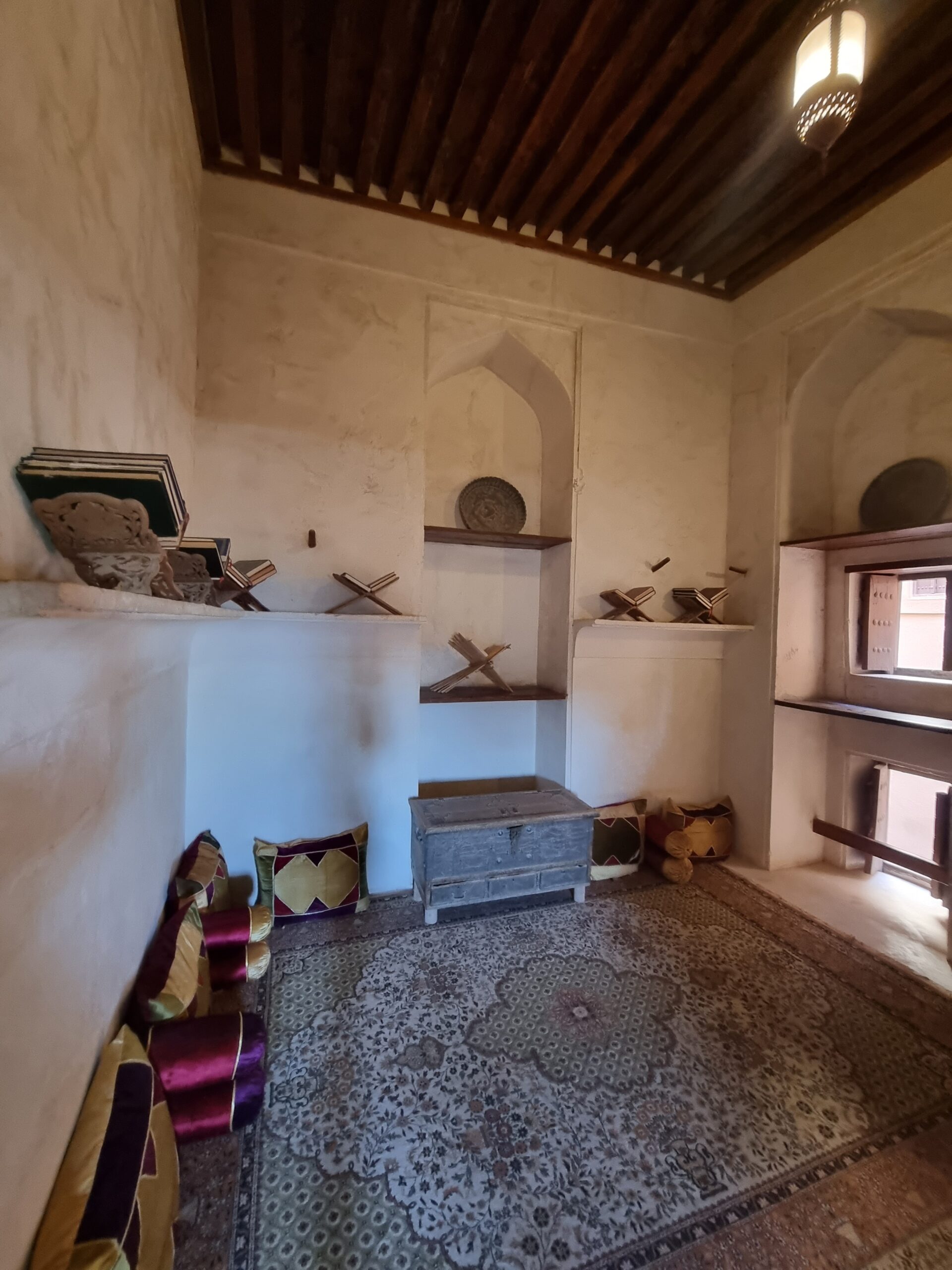
Beautiful! Stunning! Gorgeous!
If you’ve recently spent too much time watching Bridgerton and then continued to read all the Julia Quinn books, I would advise you to step back in time and visit Jabreen Castle. The castle has a spectacular view of the surrounding date palms and mountains. This view can be appreciated at its best if you climb millions of stairs until you reach the roof. I would, however, not recommend that you travel up the stairs of the high lookout towers if you suffer from vertigo. My husband seems to enjoy pushing me to new heights, literally. I discovered that I might not be such a fan of heights after our little Oman trip, but that’s neither here nor there.
Jabreen Castle was built in 1675 by Imam Bil-Arab Bin Sultan, seemingly mostly of mud and palm trees. In contrast to its fellow sand castles, this castle was built during a peaceful time in Oman’s history and it was, therefore, not built during a time of war.1 Now, though, this may be true the castle still resembles all the necessities of a structure built in war. Firstly, the castle is filled with embrasures through which could be shot in the event of an attack. Secondly, the castle also has an artillery room which, to my husband’s disgust, wasn’t filled with artillery or any weapons but rather with paintings.
The interior is different from the other castles and forts in that the ceiling is adorned with beautiful small paintings of flowers and such. It is clear that most of the ceilings of the rooms were made of palm wood, which seems to have been the trending ceiling structure of the the time. There are rooms, where I assume the old ceiling has been replaced with a new one, I’m not sure what wood they used for this. Most of the staircases and some other parts of the palace have beautiful engravings into the mud ceiling, some purely decorative and others have Arabic writing.
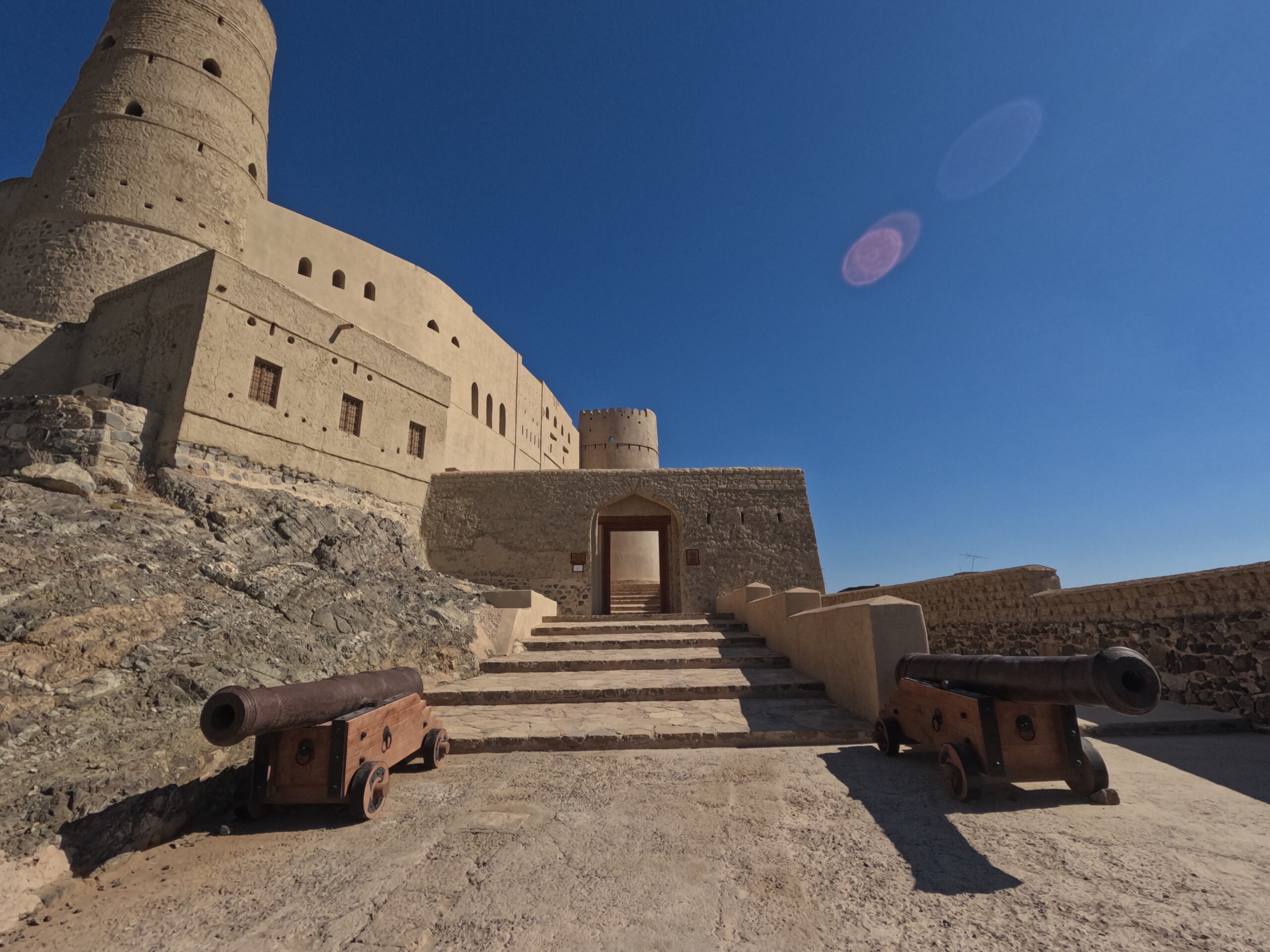
Bahla Fort
Constructed between the 12th and 15th century, Bahla Fort is a mesmerizing scene to behold. This enormous building can be seen from a great distance. Built on a hill, the fort overlooks the rest of Bahla, new and old. The old Bahla has been left as is, and one cannot help but wonder how life must have been here 500 years ago.
History of Bahla Fort
The first time I saw Bahla Fort, in 2005, it was still under massive renovations. Bahla Fort is a UNESCO heritage site and was on the list of heritage sites in danger from 1988 to 2004.2 Understandably the mud composition had deteriorated over the years due to rainfall.3 Luckily renovations were instituted and the building could be saved from its own (literal) ruin. These renovations, however, seemed to have been poorly instituted as the UNESCO website states that “inappropriate materials” were used. UNESCO continues to state that the renovations continued a couple years later with “earthen-based materials” (which I’ve been informed by Miriam-Webster is “made of earth or of baked clay”).
Design
From the outside Bahla Fort seems like an enormous fortress, though, once you enter the building you see something different. On the inside of the fort, you will come across something resembling a small village. On the one side of the sand castle, you will find what I would assume would have been the main building. The entrance of this building has a beautiful high ceiling with a stunning qibla (or at least I think it is a qibla).This is one of the few parts of the fort that’s been restored to part of its former glory.
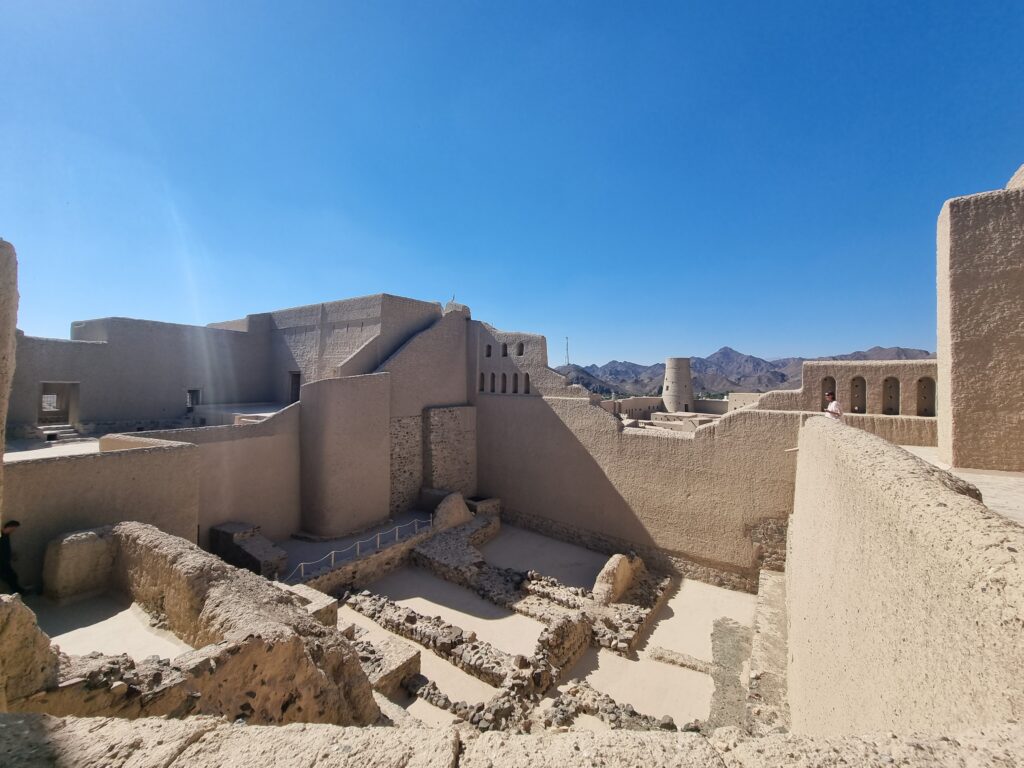
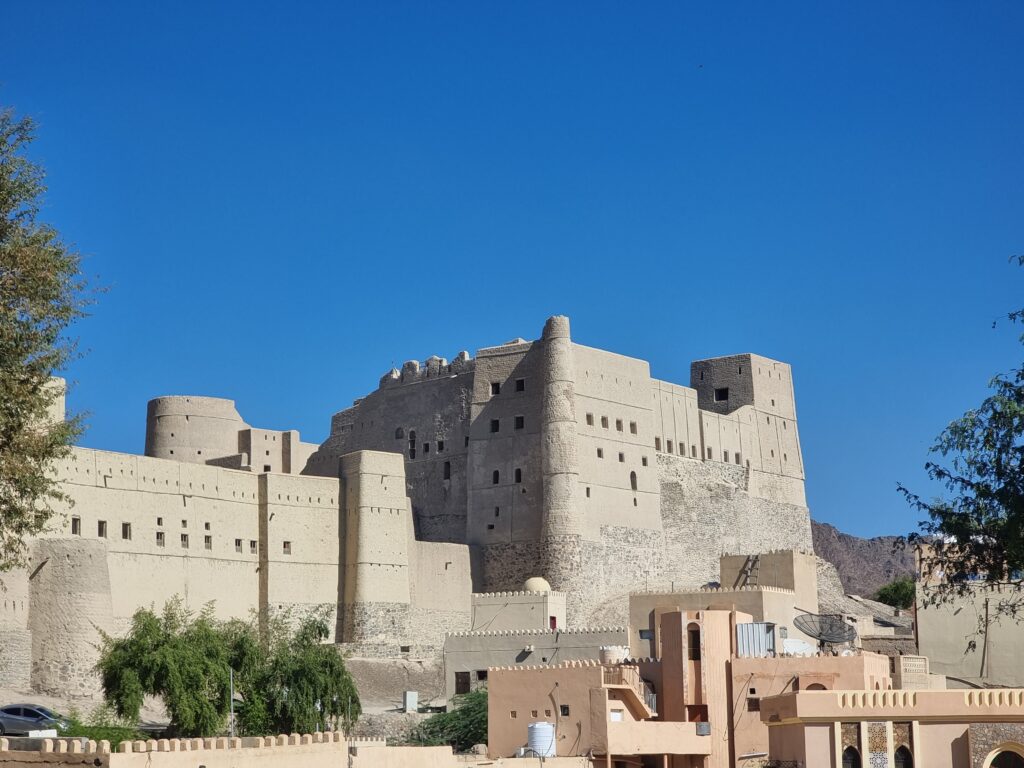
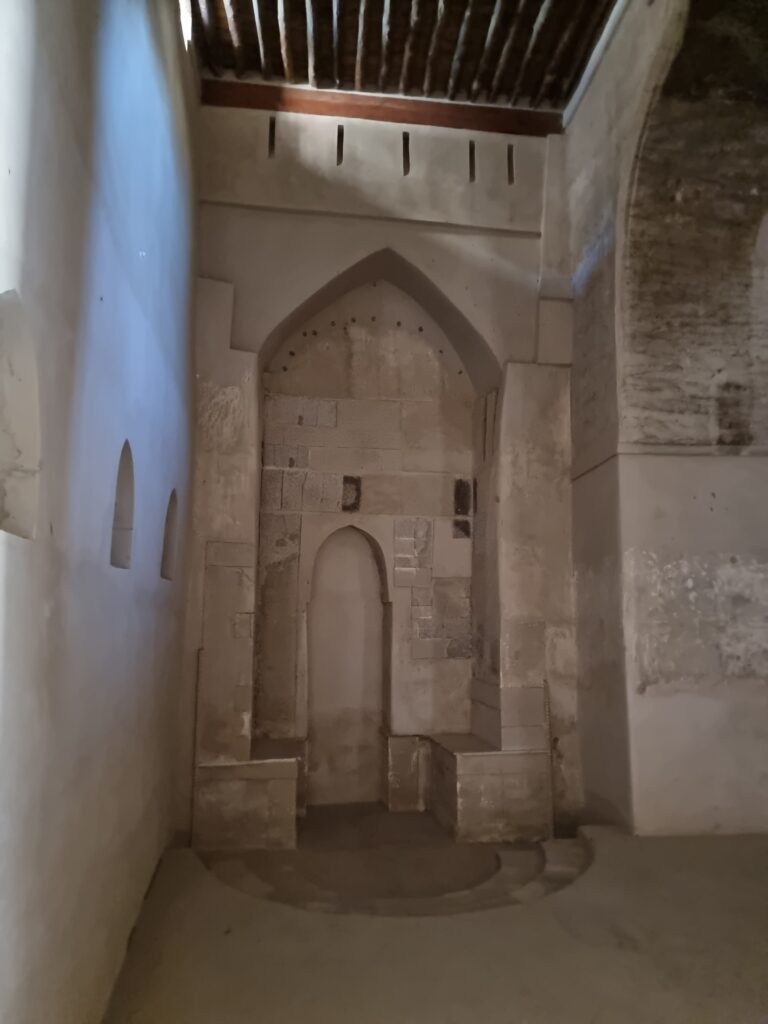
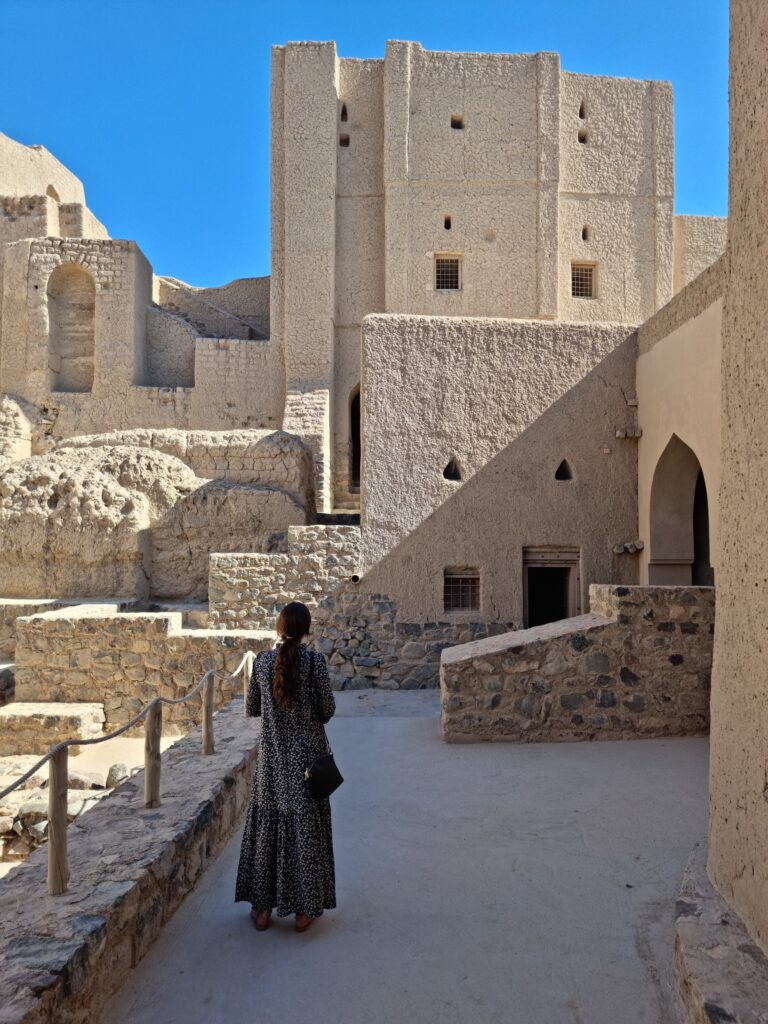
1 https://www.omanmagazine.com/2019/06/visit-the-historic-jabreen-castle-in-oman/